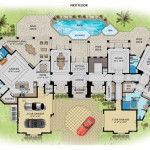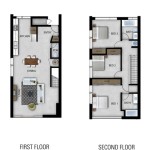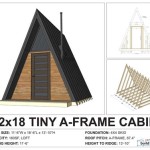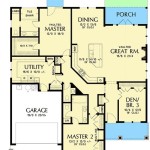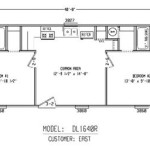Bedroom Floor Plan With Dimensions
When designing a bedroom, it's essential to consider the layout and dimensions to ensure functionality and comfort. A well-planned bedroom floor plan can maximize space utilization, promote a restful atmosphere, and accommodate your lifestyle needs. Here's a guide to help you create a bedroom floor plan with dimensions:
1. Determine the Room's Purpose
Consider how you intend to use the bedroom. Will it be solely for sleeping, or do you need additional space for activities like reading, dressing, or working? Defining the room's purpose will guide your layout decisions.
2. Establish a Focal Point
Identify a focal point in the bedroom, typically the bed. Position the bed strategically to create a visually appealing and functional layout. Consider the size of the bed and ensure it anchors the room without overcrowding it.
3. Plan for Movement
Adequate circulation space is crucial for a comfortable bedroom. Allow at least 3 feet (0.91 meters) of clearance around the bed and other furniture to facilitate easy movement. Consider the opening direction of doors and windows to avoid obstructions.
4. Incorporate Storage
Plan for ample storage solutions to keep the bedroom tidy and organized. Built-in wardrobes, nightstands with drawers, and under-bed storage can help maximize space. Determine the dimensions of the storage units based on your storage needs.
5. Optimize Lighting
Natural and artificial lighting play a significant role in creating a relaxing and inviting atmosphere. Position windows strategically to allow for ample natural light. Incorporate a combination of ambient, task, and accent lighting to cater to different moods and activities.
6. Consider Furniture Arrangements
The furniture arrangement should complement the layout and create a harmonious flow. Experiment with different furniture positions to find the optimal placement. Ensure the bed remains the focal point, and avoid blocking doors or windows.
7. Stick to Standard Dimensions
When planning your bedroom floor plan, consider standard dimensions for furniture and appliances. This will simplify furniture selection and ensure a cohesive look. Here are some common dimensions to consider:
- Bed: Queen size (60" x 80"), King size (76" x 80")
- Nightstand: 24" - 30" wide, 18" - 24" deep
- Dresser: 54" - 72" wide, 18" - 24" deep
- Armchair: 32" - 36" wide, 30" - 36" deep
- Window: 32" - 48" wide, 48" - 60" high
8. Utilize Technology
Consider incorporating smart home technology into your bedroom design. Smart lighting, automated curtains, and voice-controlled devices can enhance convenience and comfort. Plan the placement of electrical outlets and switches accordingly.
Remember, the ideal bedroom floor plan is tailored to your specific needs and preferences. By following these guidelines and considering your lifestyle, you can create a bedroom that promotes relaxation, functionality, and a harmonious atmosphere.
9 Tips To Consider When Planning Your Bedroom Layout

Bedroom Floor Plan Measurements Plans Unique Kitchen

Image Result For Floor Plans With Dimensions L Bedroom Guest House Tiny Pool

Bedroom Floor Plans Types Examples Considerations Cedreo

Floor Plans With Dimensions Including Examples Cedreo

How To Read Floor Plans With Dimensions A Guide

Beautiful 3 Bedroom Floor Plan With Dimensions 9 Impression Apartment Plans House Simple

Bedroom Floor Plans And Layouts With Dimensions Decide Your House

A Two Dimensional Drawing Showing The Floor Plan Of Three Bedroom Scientific Diagram

How To Read A Floor Plan



